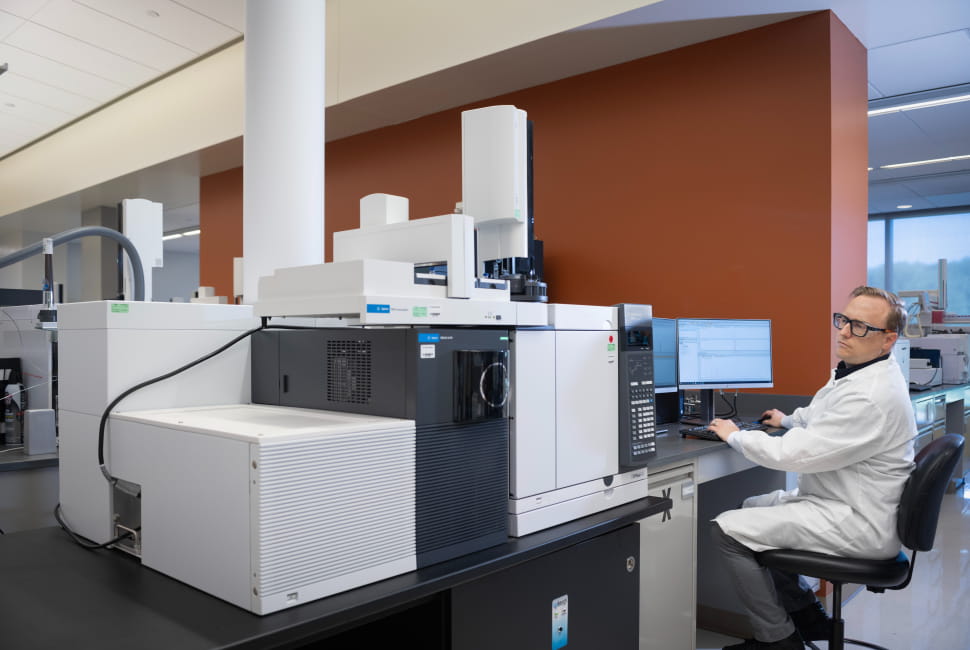Leachables Method Development and Validation and the Updated Relevant ICH References
Part I – Background and History
The final step in the drug packaging extractables and leachables (E&L) journey is the determination of the actual leachables that are observed in the drug during the product’s shelf life. This is typically determined with a leachables stability study that incorporates accelerated and normal storage conditions, with the results of the accelerated conditions often being used to support a regulatory submission. However, before any of these activities take place, methods to determine a wide range of potential leachables (organic and inorganic) need to be developed and validated for this specific use.

For many years in many pharmaceutical QC laboratories, ICH Q2(R1) “Validation of Analytical Procedures: Text and Methodology” has been a key reference on how to validate analytical methods that were developed for testing against critical quality attributes of drug products and substances. This long-standing guidance was last released as final in 1995, but a new revision, ICH Q2(R2), was drafted over the past 3 years and adopted officially on June 14, 2024. Alongside this new revision a new guidance on analytical method development, ICH Q14 “Guideline on analytical procedure development,” was made official at the same time.
How do these updated guidelines affect the development and validation of leachables methods though? To be able to answer this, first a short review of the evolution of leachables methods should be done. When the E&L industry first came about, target leachables that needed to be determined during stability were defined based on the known extractables of a packaging system and their potential toxicological risks. This has fundamentally not changed, but what has changed is the technology. Many older leachables methods were developed only for determining target leachables and employed non-mass spectrometry chromatographic instrumentation like gas chromatography flame ionization detection (GC-FID). Over the past several years, industry expectations have shifted away from these techniques in favor of mass spectrometry, as the technology and user experience have become more accessible. This technology can help with sensitivity at low limit concentrations and may also be used separately to screen for non-target leachables during studies when validated leachables methods are used for target compounds. The increase in the use of mass spectrometry has also become necessary as more and different types of products are developed that need their potential leachables to be known. Some applications lead to analytical reporting thresholds (and therefore method quantitation limits) at concentrations that non-mass spectrometry instruments can struggle to meet. Incorporating both bespoke preparation techniques and mass spectrometry analyses into leachables methods more easily allows analyses at parts-per-billion concentrations.
As mass selective detectors (MSD) have increased in use, especially in leachables methods, some recommendations in ICH Q2(R1) could not be applied literally. An example of this is in attempting to determine quantitation and/or detection limits by measuring signal-to-noise ratios (S/N) of the target compounds. If a method is developed using an MSD as its detector and employs a data processing technique that extracts only the ions of interest from target compounds, as opposed to all or total ions, there is a chance there may be no noise around the corresponding signal, making the calculation of S/N meaningless. Statistical approaches (e.g., a t-test of the means of spiked versus un-spiked samples) can be employed in these cases to demonstrate specificity at the quantitation limit (QL) and detection limit (DL) concentrations. These approaches are now mentioned, along with other options, in ICH Q2(R2).
Another example of the updated guidance accommodating newer techniques is in calibrations of analytical methods. A well-known phenomenon of MSDs is that they often do not respond linearly over ranges where non-MSDs might. ICH Q2(R1) literally called this attribute of methods “linearity” leading to a generation of analytical chemists referring to their calibrations as “linearity,” even if they employed an MSD that did not respond in that way. Both ICH Q2(R2) and ICH Q14 now use more general language like “response” and “calibration model” to describe this attribute, with the former going as far as delineating linear response, non-linear response, and multi-variate calibrations. The takeaway here is that in analytical methods it is not necessary that the responses of your target compounds be linear to be valid, but they still must follow some model, the one that is determined to be acceptable when the method is developed and validated.
For more information on our Extractable and Leachable expertise and testing capabilities click here.



